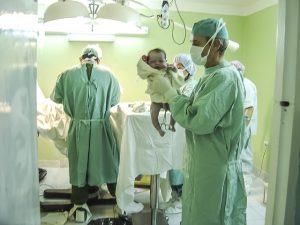If you are considering a student elective, clinical externship, or medical residency program in the United States, one of the most important things that you have to think about is living accommodations — that is, where you will live for the duration of the program. If you are entering a U.S. medical residency program, you will need long-term housing, since medical residencies in the United States can last anywhere from three to seven years. Alternatively, if you are completing a graduate externship program or a student elective, there are more short-term living accommodations available.
It is important to note that housing is different in the United States than it is in some of the other places around the world, so it can be helpful to get an idea of your options before you start looking for accommodations. Read on to learn more about long-term housing options for aspiring medical residents and short-term accommodations for medical students and graduates who are visiting the United States for a clinical externship or a student elective.
Long-Term Housing Options for Medical Residents
As a medical resident in the United States, there are a wide range of factors that can contribute to the type of housing you choose — including your financial circumstances, your family situation, the region of the country in which your residency is located, and whether or not your program is in a rural or an urban setting. Here are some of the types of housing that you might want to think about.
- Apartment. An apartment is one of the most common housing choices for medical students and residents in the United States, especially in urban and suburban areas. If you want to live alone, you can often find a studio or one-bedroom apartment. Alternatively, many medical residents share a two- or three-bedroom apartment with roommates. This can be a great way to cut down on the cost of living during your residency, and it can also help you make social connections with other residents. In many cities in the United States, renting an apartment is the most common (and affordable) option. However, there are also some places where investing in your own apartment is a feasible option, so it is important to find out about housing prices in the area of your residency before you decide.
- Shared house. In some locations in the United States, it is easier for prospective renters to find a shared house than a traditional apartment. In a shared house, you might rent one bedroom for yourself and share a kitchen, bathroom, and living room with other roommates. You might also be able to find a situation in which a house is split between floors, with one renter on the first floor and one renter on the second floor.
- Single-family house. If you are bringing a family to the United States and you need more space, you could consider buying or renting a single-family house. Again, availability and affordability depend on the location of your residency and your criteria for living accommodations, but in some places, it might make sense to invest because medical residency programs last for so long. Still, it is important to note that, if you choose to buy instead of rent, you are responsible for the care and upkeep of your house, and you will need to balance find a balance between the time you spend caring for your house and your responsibilities as a medical resident.
Accommodation Options during Clinical Externships and Student Electives
Before applying for a medical residency program, many foreign medical students and graduates complete a clinical externship or a student elective in the United States. These programs typically last for either three months or six months, and they can be a great way to learn more about a specialty area of interest, bulk up your CV, and establish connections with physicians in the United States who might be able to write letters of recommendation when you apply for a U.S. medical residency program. Because clinical externships and student electives are shorter than residency programs, the options for living accommodations are different:
- Subletting an Apartment. Many foreign medical students and graduates choose to sublet an apartment for three or six months. In the United States, it is typically easiest to find sublets available between June and August, when many university students are away from their apartments for the summer.
- Short-term Apartment Rental. In some apartment buildings, landlords offer six-month leases, so if your clinical externship lasts for a full six months, this can be an affordable option. Alternatively, if you are completing a three-month student elective or clinical externship, you might find an apartment where you can choose month-to-month rental for three months.
- House Sharing. House sharing options, like AirBnb, are becoming increasingly popular in the United States. Depending on the location of your student elective or clinical externship, you might be able to find a short-term rental in a fully-furnished home for an affordable price.
For foreign medical students and graduates who are interested in applying for U.S. medical residency programs, FMG Portal provides a wide range of resources. We offer three-month student electives for foreign medical students, as well as three- and six-month clinical externships for graduates. We can also help you with accommodations when you decide to participate in these programs. Contact us today for more information!










